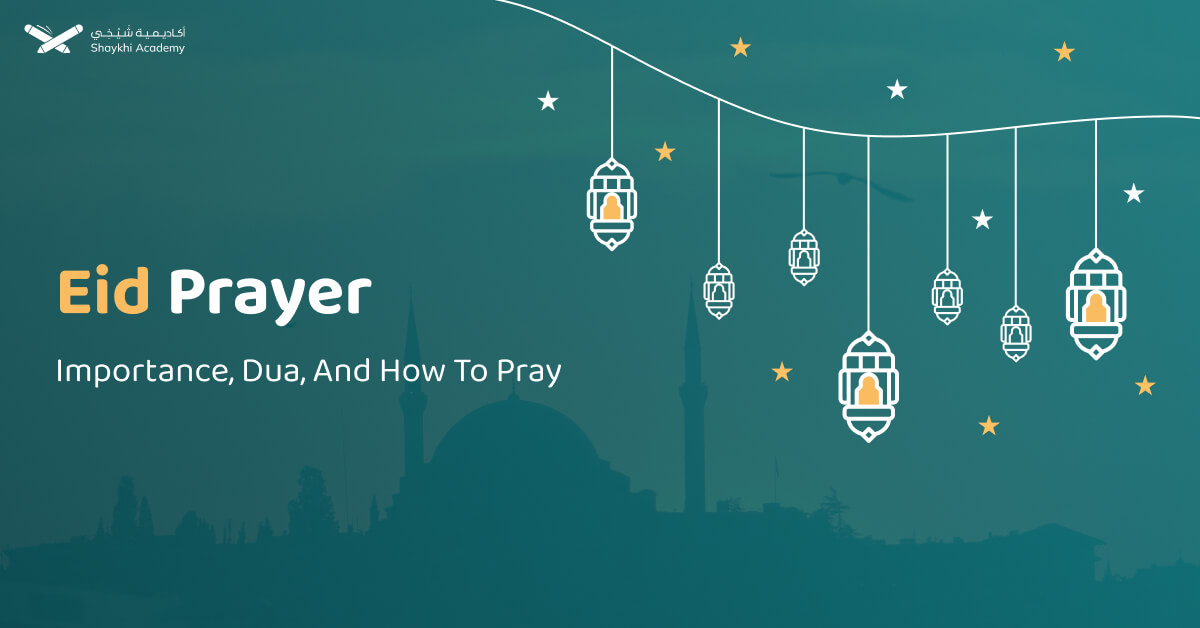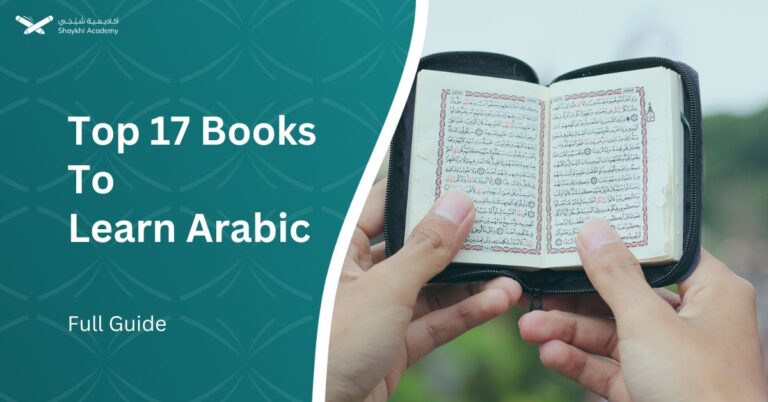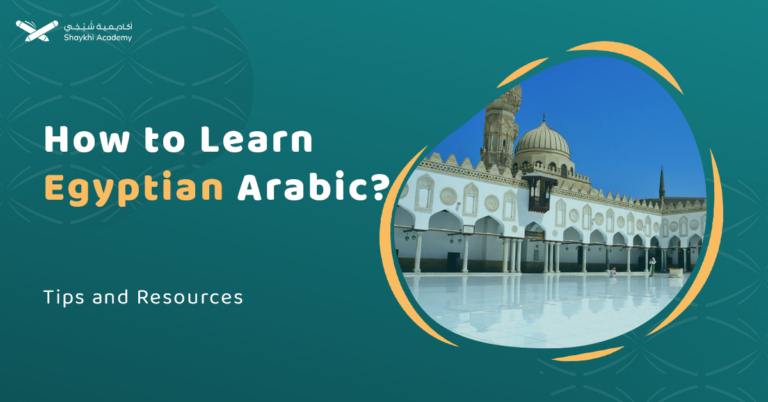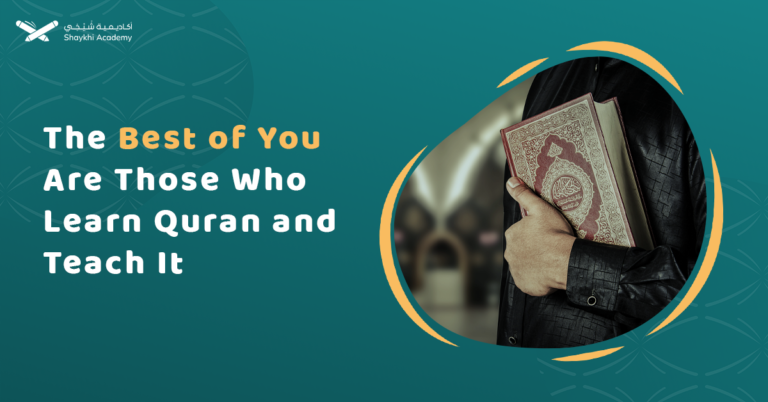The Eid prayer holds great significance in the Islamic calendar, symbolizing a joyous occasion that unites the Muslim community in devotion. There are two main Eid prayers – Eid-ul-Fitr and Eid-ul-Adha – each observed with unique rituals and practices. Muslims offer prayers as a congregation, expressing gratitude to Allah and fostering a sense of fraternity and belonging.
The Eid prayer dua, “Taqabbal Allahu minna wa minkum,” serves as a beautiful expression of congratulations exchanged among Muslims on the day of Eid. Knowing how to perform the Eid prayer is essential, as it occurs only twice a year, and involves specific recitations and actions.
Even when performed at home, Eid prayers follow a similar structure to those offered at the mosque, with some key differences. While Eid prayer is not compulsory for women, it is highly recommended as a Sunnah.
An essential component of Eid festivities is the Eid prayer, which may be done according to this guide’s step-by-step method. Muslims offer prayers as a congregation and express gratitude to Allah on this day. Ameen, may all of your prayers come true!
Eid prayer
Eid prayer holds a special significance in the Islamic calendar, marking a joyful occasion that unites the Muslim community in devotion. As Eid occurs only twice a year, it’s helpful to refresh our understanding of what to expect during this important event.
The Eid prayer, led by the Imam, is a central aspect of the celebration, requiring careful attention to the recitations and proper adherence to its unique rituals. By following simple instructions, we can ensure that we participate fully in this prayer and reap the rewards and blessings bestowed by Allah (SWT).
The Two Eid Prayers
The two Eid prayers are Eid-ul-Fitr and Eid-ul-Adha. The dates of Eid are common information for many Muslims, however a revert may still be unclear about the number of Eids observed in Islam.
The Prophet Muhammad (PBUH) himself chose two occasions, known as Eid-ul-Fitr and Eid-ul-Adha, on which we can celebrate auspicious occasions in the Islamic calendar.
Even though both celebrations go by the abbreviation “Eid,” they differ greatly in terms of how they are observed and the months that follow.
Importance of Eid prayer
In the congregation, among friends, family, and other Muslims, Eid prayers are done. Muslims throughout the world may express their appreciation to Allah and foster a sense of fraternity and belonging by participating in prayers. Furthermore, prayers directly affect a person’s life and help them achieve great outcomes and benefits.
Eid prayer Dua
The Eid prayer dua, as recounted by Jubayr ibn Nufayr, is a beautiful expression of congratulations exchanged among the companions of Prophet Muhammad (peace and blessings of Allah be upon him) on the day of Eid. It is traditionally recited in Arabic:
“تَقَبَّلَ اللهُ مِنَّا وَمِنكُم”
Transliteration:
“Taqabbal Allahu minna wa minkum”
Interpretation:
“May Allah appreciate our good actions as well as yours.” or “May you and us offer this worship to Allah.”
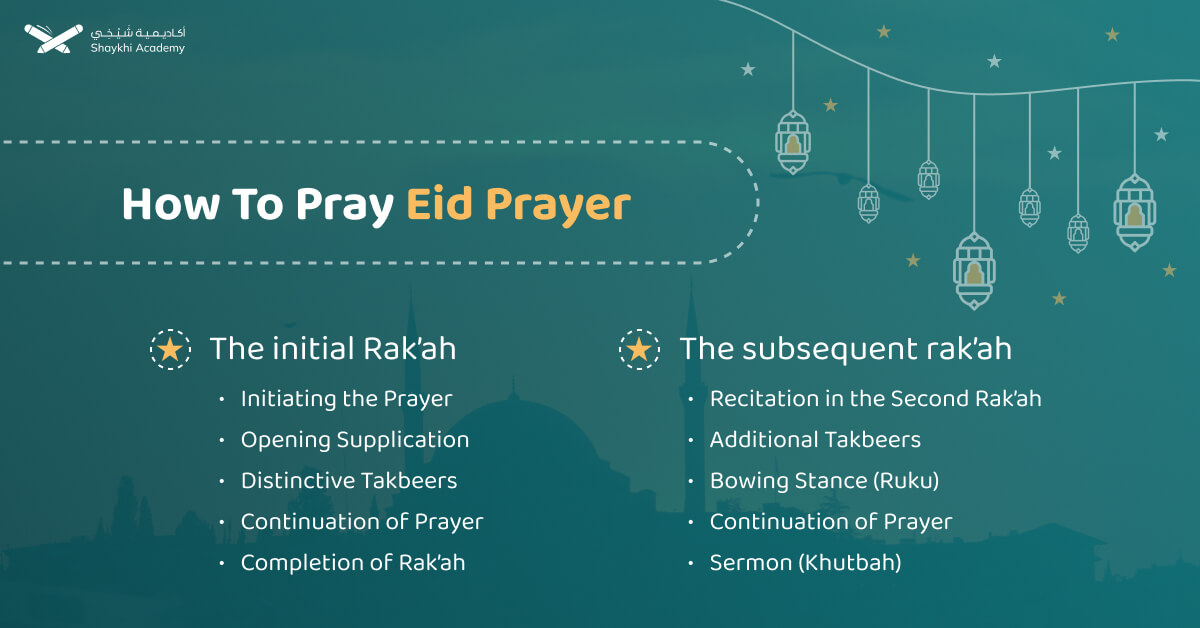
How to pray Eid prayer
As we say the Eid prayer just twice a year, thus it’s important to know how to pray! So that you may easily perform the Eid prayer, we’ve produced a guide.
How many Rakats in Eid prayer?
Two rak’ahs (parts) of the Eid prayer include additional takbeers. You begin with a Niyah that is nonverbal. This is not said aloud.
What do you say on your Eid prayer?
The first takbeer, takbeerat-ul-ihram (Allahu Akbar), is said. The first Rakah then contains six additional takbeers. It is not required to recite the opening supplication.
Take the actions listed below for Eid al-Fitr and Eid al-Adha. (They are based on Hanafi’s ideology).
Before beginning:
Wearing your nicest attire and making ghusl is Sunnah before attending the Eid prayer. After all, Eid is a celebration!
Reciting takbeer as you leave your home to make your way to the Eid prayer is also Sunnah.
As with previous prayers, set your intention beforehand by saying your Niyyah. This objective must be the center of one’s heart.
How do you pray The initial Rak’ah in Eid prayer?
- Initiating the Prayer: As you begin the Eid prayer, raise your hands to your shoulders (for ladies) or earlobes (for males) while uttering the takbeer, “Allahu Akbar.” Then, place your right hand over your left slightly below the naval, or for ladies, beneath the chest.
- Opening Supplication: Start with the prayer “SubhanaK-Allahumma wa bihamdiKa, wa tabaarak-asmuKa, wa ta-’aala jadduKa, wa la ilaaha ghayruK.” This signifies the sole divinity of Allah and praises His name and glory.
- Distinctive Takbeers: The Eid prayer is characterized by multiple takbeers led by the Imam. For each takbeer, raise your hands to your shoulders or ears, then lower them to your sides.
- Follow the Imam: The Imam determines the number of takbeers, typically three according to Hanafi tradition. Pay attention to the Imam’s instructions before the prayer begins.
- Continuation of Prayer: After the takbeers, assume the regular prayer posture with your right hand over your left below the navel (or beneath the chest for ladies). The Imam will recite Surah al-Fatihah and another surah.
- Completion of Rak’ah: Complete the remaining rak’ah of the prayer following the same procedure as your regular obligatory prayers.
The subsequent rak’ah:
- Recitation in the Second Rak’ah: In the subsequent rak’ah, the Imam will recite Surah al-Fatihah followed by another surah.
- Additional Takbeers: Following the Qur’anic recital, the Imam will lead multiple takbeers. Lift your hands to your shoulders or ears for each takbeer and then lower them to your sides. Note that the number of takbeers may vary depending on the Imam’s tradition.
- Bowing Stance (Ruku): After the takbeers, proceed to bow down into a ruku position.
- Continuation of Prayer: Complete the remainder of the rak’ah following the standard format of your obligatory prayers.
- Sermon (Khutbah): Following the prayer, the congregation will listen to a khutbah (sermon) delivered by the Imam. The khutbah may last anywhere from ten to thirty minutes and will cover important Islamic topics. Pay close attention to the sermon.
What to do after Eid Prayer?
After praying, choose an alternative way home. On the Day of Judgment, both of your paths will attest to your attendance at this prayer. According to Abu Huraira, the Messenger (saw) would return via a different route from the one he had taken when he went for Eid (prayer).
Eid prayers at home
Performing Eid prayers at home follows a similar structure to those offered at the mosque, with some key differences. An adult male family member should lead the prayer in the role of an imam, while other family members form the congregation. The timing for Eid salah at home typically begins fifteen minutes after daybreak and concludes ten to fifteen minutes before Dhuhr, or midday.
During the prayer, the imam recites the takbeers and surahs from the Qur’an aloud, while the congregation follows silently. Unlike the Eid prayer at the mosque, there won’t be a khutbah (Eid sermon) at home. However, it’s essential to maintain the usual prayer protocols, ensuring that the spirit of Eid is upheld even in a home setting.
Is Eid prayer compulsory for ladies?
No, for women, offering prayers on Eid is not required. Nonetheless, it is a sunnah that is advised.
Of course, you want to know all the information about the holiday at this time specifically, and with the approaching holidays, so Shaykhi Academy is interested in presenting such an article to you to achieve what you want, and if you want to know more, you should communicate immediately with them. happy eid.
Unlock the Path to Quranic Mastery with Shaykhi Academy!
Are you seeking the finest Quranic education right from the comfort of your home? Look no further! Shaykhi Academy stands out as a premier online Quran learning platform, dedicated to providing exemplary education to both children and adults.
Why Choose Shaykhi Academy?
- Connect with highly qualified native tutors.
- Flexible scheduling to suit your busy lifestyle.
- Affordable classes tailored for all levels.
- Accessible from anywhere around the globe.
Discover Our Range of Courses:
- Arabic Noorani Qaida: Lay a solid foundation for Quranic studies.
- Online Quran Classes for Kids: Engaging lessons for lifelong learning.
- Tajweed Rules for Kids: Learn to recite with confidence.
- Quran Hifz for Kids: Step-by-step guidance to memorize the Quran.
- Quran for Adults: Introduce yourself to Quran reading and Tajweed rules.
- Online Arabic Courses: Master the language of the Quran.
- Islamic Studies: A wide range of topics related to Islam, including theology, law, Quranic studies, Hadith.
Don’t Miss Out on Your Chance to Excel!
Whether you’re a beginner or seeking advanced knowledge, Shaykhi Academy can guide you! Book your free trial now and make Ramadan 2024 your Quranic turning point!
Conclusion:
In conclusion, the Eid prayer serves as a cornerstone of the Eid celebrations, embodying the spirit of gratitude, unity, and devotion among Muslims worldwide. Understanding its significance, rituals, and practices ensures a meaningful observance of this auspicious occasion.
Whether performed at the mosque or at home, the Eid prayer strengthens the bonds of community and faith, reaffirming the values of Islam. As the Eid festivities approach, let us embrace the opportunity to engage in this profound act of worship and celebration. Eid Mubarak to all!
